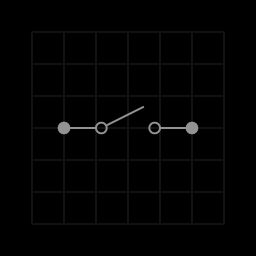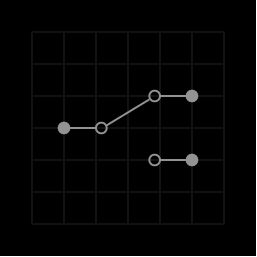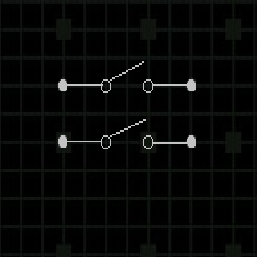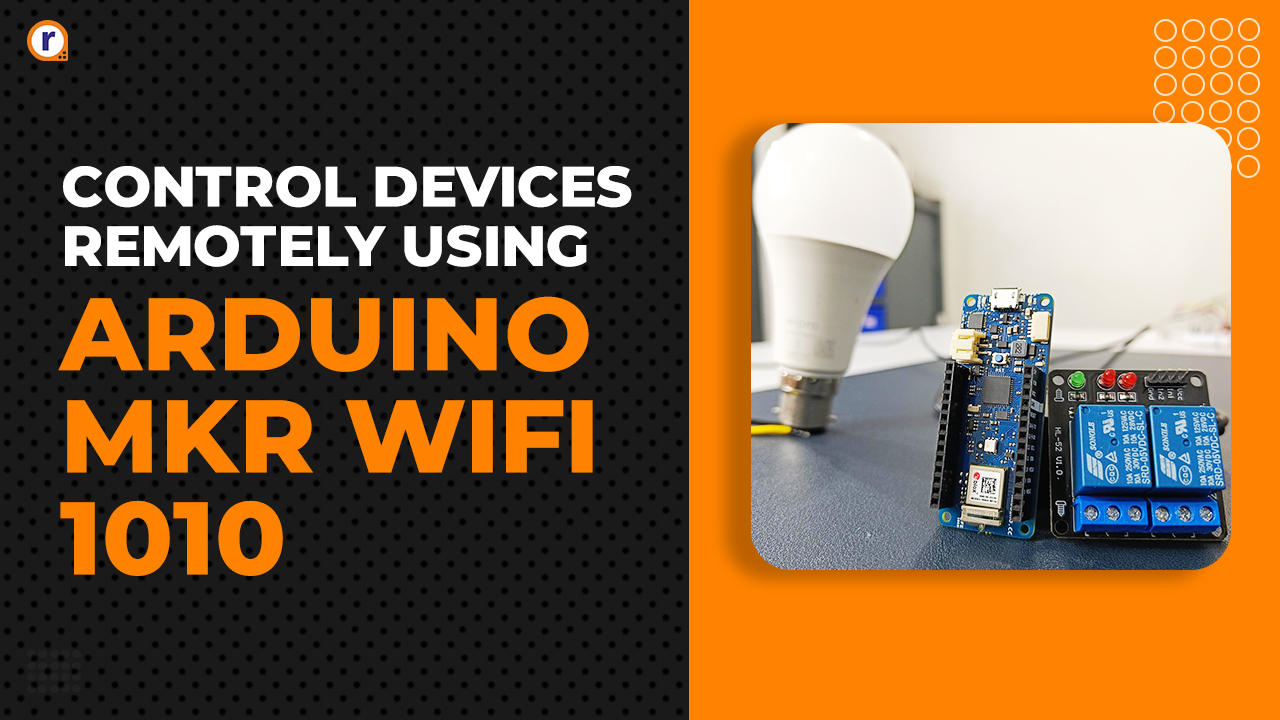What Is Relay And How Does It Work?
The blog covers what a relay is?, Its construction, working, configurations, advantages and disadvantages, and applications.

Most people say that they know about the term relay or have heard it. Some will say that it is a type of protection device, some say it is a transmission device and even some say it is a type of race (relay race). But what does is it really mean? In this article, we’ll dive into the world of relays and answer some of the questions like...
- What is Relay?
- Construction and Working of Relay
- Types of Relay
- Pole and Throw Combinations
- Advantages and Disadvantages of Relay
- What are the Applications of a Relay
So let’s begin.
What is Relay?
Merriam-Webster says: a relay is
"an electromagnetic device for remote or automatic control that is actuated by variation in conditions of an electric circuit and that operates in turn other devices (such as switches) in the same or a different circuit.”
So from this definition we understand, a relay is a device with which you can operate high power devices at low voltage. Also, it is a device to automate and/or protect your devices from harm. Now that we know what a relay is, lets get to know when it was first used.
In 1809 Samuel Thomas von Sömmerring designed an electrolytic relay as part of his electrochemical telegraph.
American scientist Joseph Henry is often claimed to have invented a relay in 1835 in order to improve his version of the electrical telegraph, developed earlier in 1831.
It is claimed that English inventor Edward Davy "certainly invented the electric relay in his electric telegraph c.1835.
A simple device, which is now called a relay, was included in the original 1840 telegraph patent of Samuel Morse. The mechanism described acted as a digital amplifier, repeating the telegraph signal, and thus allowing signals to be propagated as far as desired.
The word relay appears in the context of electromagnetic operations from 1860.
Source: Wikipedia
So, all in all, the term relay has been around since the start of the nineteenth century. With that brief history lesson on the first appearance of the term relay, let’s move forward and see the construction and working of a relay.
Construction and Working of Relay
Having seen what a relay is in the previous section, we’ll now take a look at all the parts that make up a relay and how they all work in unison.
A relay is made up of a few parts, which can be separated into an Electromagnet, a movable armature, contacts, yoke, and a frame. The figure below shows the construction of a relay.

Let's dive into knowing what all these parts are and how they operate.
The electromagnetic relay essentially consists of a coil to which a voltage is applied, a core upon which the coil is wound, relay contacts, and a movable steel armature which is held against one of the contacts by means of the spring. Before the voltage is applied to the coil the relay is said to be in its normal or de-energized position. Its action depends on the interaction of the magnetic field set up by the coil carrying the current and the movable steel armature.

In the relay shown in Fig. (a) any external circuit that you connect between terminals 1 and 3 is in a closed position at this instant and the external circuit connected between terminals 1 and 2 is in an open position. When you apply voltage to the coil, the relay gets energized and the magnetic field set up around the coil makes the armature to be attracted toward it. Contact 4 breaks with terminal 3 but makes with terminal 2, and any external (controlled) circuit connected between terminals 1 and 2 is now completed. The relay remains in the position till the coil remains energized.
The schematic interpretation of this basic relay is illustrated in Fig. (b). Terminals 2 and 3 are the fixed contacts, and terminal 1 is connected to the movable armature (in some relays the armature remains isolated from all contacts). The contacts of the basic relay act as single pole double throw (SPDT) switch. Although switch contacts are manually controlled, relay contacts are remotely controlled.
Let’s move forward and see the types of relay there are.
Types of Relay
Other than the Electromagnetic relay there are many other types of relays that work on different principles. Its classification is as follows:
Types of Relay Based on the Principle of Operation
- Electrothermal Relay:
When two different materials are joined together it forms into a bimetallic strip. When this strip is energized it tends to bend, this property is used in such a way that the bending nature makes a connection with the contacts.
2. Electromechanical Relay:
With the help of few mechanical parts and based on the property of an electromagnet a connection is made with the contacts.
3. Solid State Relay:
Instead of using mechanical parts as in electrothermal and electromechanical relays, it uses semiconductor devices. So, the switching speed of the device can be made easier and faster. The main advantages of this relay are its more life span and faster switching operation compared to other relays.
4. Hybrid Relay:
It is the combination of both electromechanical and solid-state relays.
Types of Relay Based on the Polarity:
- Polarized Relay:
These are similar to the electromechanical relays but there exists both permanent magnet and electromagnet in it, the movement of the armature depends on the polarity of the input signal applied to the coil. Used in telegraphy applications.
2. Non-polarized Relay:
The coil in these relays doesn’t have any polarities and its operation remains unchanged even if the polarity of the input signal is altered.
Pole and Throw Combinations
Relays can also be classified based on a number of pole and throw combinations. A pole can be considered as an input terminal and a movable part connected to it, whereas a throw can be considered as an output terminal. Its classification is as follows
Single Pole, Single Throw (SPST):
It consists of only one pole and one throw. Generally, the path is either closed or opened (remains untouched to any terminal). When the coil is energized, the contact is in the closed position, thereby completing the circuit, and when de-energized the contact is in the open position, which can be understood from the below image.

Single Pole, Double Throw (SPDT):
This type of relay consists of only one pole but has two throws. So, the contact is always made to either of the terminals. The armature is always connected to either of the contacts i.e., a closed path always exists all the time if both the terminals are connected to a circuit.

Double Pole, Single Throw (DPST):
It has two poles and a throw. The contacts of it are either opened or closed which is done simultaneously. When the coil is energized, the armature moves from one position to another, both the contacts are moved simultaneously.

Double Pole, Double Throw (DPDT):
This type of relay has two poles but the individual pole has two throws. So, it is named as double throw and the switching action is done similarly and simultaneously for both the poles.

So you might be thinking that’s it. And frankly, that’s pretty much it right, but no, there is more. More? Yes! Ok, let’s recap a bit. We’ve learned about what the relay is? How does it operate? What are the parts that go into making a relay? And what are the types of a relay?
Then what is remaining? If you go back to the top you’ll see that there is a question on the pros and cons (or advantages and disadvantages) of using a relay and where is it actually used?
These last two sections will answer both of these questions.
Advantages and Disadvantages of Relay
Let’s start with the advantages of a relay.
- It allows us to control a remote device. It is not necessary to be near the device to make it work.
- Change contacts easily.
- Isolates the activating part of the actuating part.
- It works well at high temperatures.
- It is activated with low current, however, it can activate large machines of great power.
- With a single signal, you can control several contacts at once.
- It can switch direct current or alternating current.
Now for the disadvantages
- Contacts are damaged over time and continuous use (wear, oxidation, etc.)
- They generate a lot of noise with the activation and deactivation of the contacts.
- Switching time is high
Applications of Relay
The applications of the relay are limitless, its main function is to control the high voltage circuit (230V circuit AC) with the low voltage power supply (a DC voltage).
- Relays are not only used in the large electrical circuits but also used in the computer circuits in order to perform the arithmetic and mathematical operations in it.
- Used to control the electric motor switches. To turn ON an electric motor we need 230V AC supply but in a few cases/applications, there may be a situation to switch ON the motor with a DC supply voltage. In those cases, a relay can be used.
- Automatic stabilizers are one of its applications where a relay is used. When the supply voltage is other than the rated voltage, a set of relays sense the voltage variations and controls the load circuit with the help of circuit breakers.
- Used for the circuit selection if there exists more than one circuit in a system.
- Used in Televisions. An old picture tube television’s internal circuitry works with the DC voltage but the picture tube needs a very high AC voltage, in order to turn on the picture tube with a DC supply we can use a relay.
- Used in the traffic signal controllers, temperature controllers.
So that’s it, folks! In this we’ve covered what a relay is, its construction, working, types, pros & cons, and uses. Hope this helps. Keep Learning.






